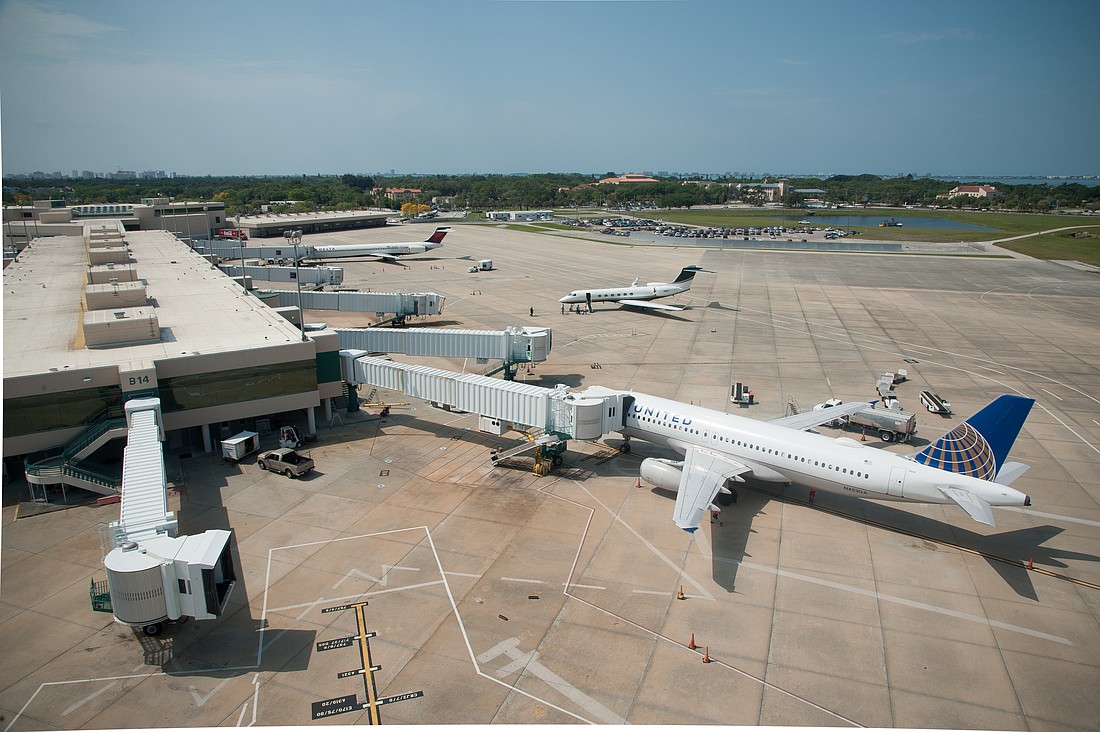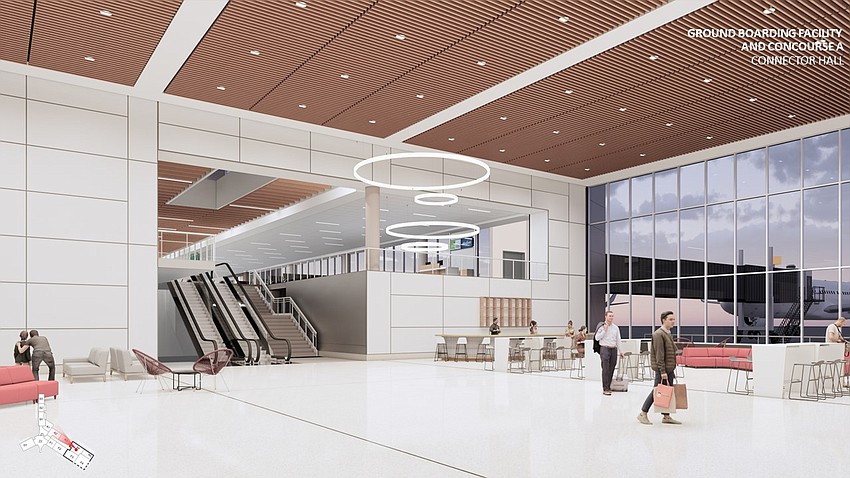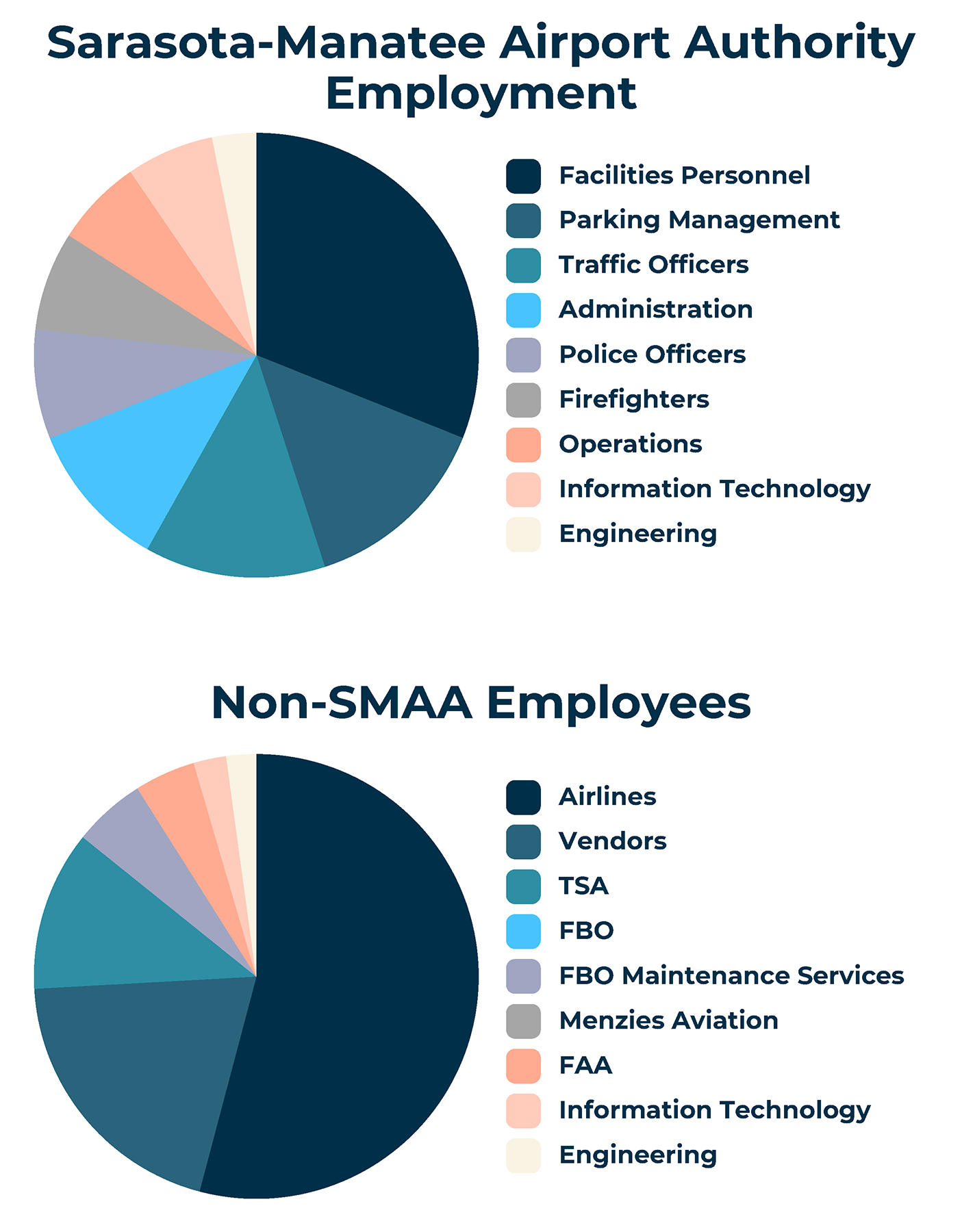- April 30, 2025
-
-
Loading
 Courtesy image
Courtesy image
Thinking back to 2017, Sarasota-Bradenton International Airport President and CEO Rick Piccolo recalls running a nice, fairly busy airport shuttling passengers mostly Sarasota and seasonal residents’ destinations in the Northeast and Midwest, plus a few main hubs.
He could never have imagined, he said, that a half-decade later he would be overseeing the rapid expansion of one of the fastest-growing airports in the world.
The secret of Sarasota, though, was revealed during COVID-19 as the lockdown-weary sought solace, sun and warmth not only in an open state, but in an area that enjoys some of the most highly regarded beaches in the world.
It hasn’t stopped since, and as SRQ's passenger count grew from 1.18 million in 2017 to 4.32 million in 2023 — through the same 13 gates at an airport designed for 3 million passengers — Piccolo and the Sarasota-Manatee Airport Authority have been planning and executing for continued growth to perhaps as many as 7 million passengers per year.
Scheduled for completion by the end of the year is the first phase of Concourse A followed by a connecting bridge between concourses A and B, bringing an additional nine gates on the way to an eventual full buildout plan of 32 gates over three concourses.
The gates will be necessary, Piccolo said, because there is no end in sight to the passenger growth.
"Look at how tourism has grown here. That's not going down. New home construction continues to grow at an exponential rate and people have discovered the area," Piccolo said. "Another factor is congestion on roadways. There are other airports in our catchment area that used to be very easy to go to, but now with all the traffic it's a lot harder, and you have to leave hours earlier than you would otherwise need to because if something happens it could end up taking three or four hours and you still miss your flight."

In addition to passenger service and capital improvements — including more escalators, expansion of vendor space, an improved and expanded baggage handling system, more parking spaces — SRQ is planning development of some 100 acres it owns south of the airfield for rental car service and storage and revenue-generating commercial space along University Parkway.
Receiving no tax dollars, SRQ is self-sustaining, relying on revenue it generates through leases of airport hangars and commercial buildings, terminal space leased to vendors, parking, landing fees, ticket surcharges, rental car surcharges and more.
And business is good. In 2017, the airport’s net operating revenue was $3.4 million after expenses. Last year, the airport netted $11.7 million and projects to end 2025 at $12.3 million, and that’s before Allegiant begins service out of the five ground-based gates in the new Concourse A.
| Year | Revenue | Expenses | Net Revenue |
|---|---|---|---|
| 2017 | $19,683,163 | $16,539,264 | $3,413,899 |
| 2023 | $29,381,732 | $40,243,968 | $10,862,245 |
| 2024 (budgeted) | $31,077,641 | $42,803340 | $11,725,699 |
| 2025 (estimated) | $32,631,520 | $44,943,507 | $12,311,983 |
But the question remains: How did SRQ triple passenger count over six years without adding gates? The answer lies in efficient gate use management and technology.
"The reason we can handle so many is what I call the three-legged stool," said Piccolo. "No. 1, our airline agreements provide that airlines that are signatory carriers have preferential use of gates they lease, but it's not exclusive use. When they're not on the ground, if we have another airline that needs one, we can put them at that gate.
"Second is the common use computer system so that any airline can go to that gate, punch in their ID and then get into their system. The third leg is we have a software system to do gate scheduling."
Here is what it takes to operate a rapidly growing airport:
2019: 2,495
2024: 3,260
2030 (projected): 3,500
Flight service | |
In 2017, six airlines offered nonstop service to 12 destinations from SRQ. The airport currently serves:
| Destinations by airline
|
